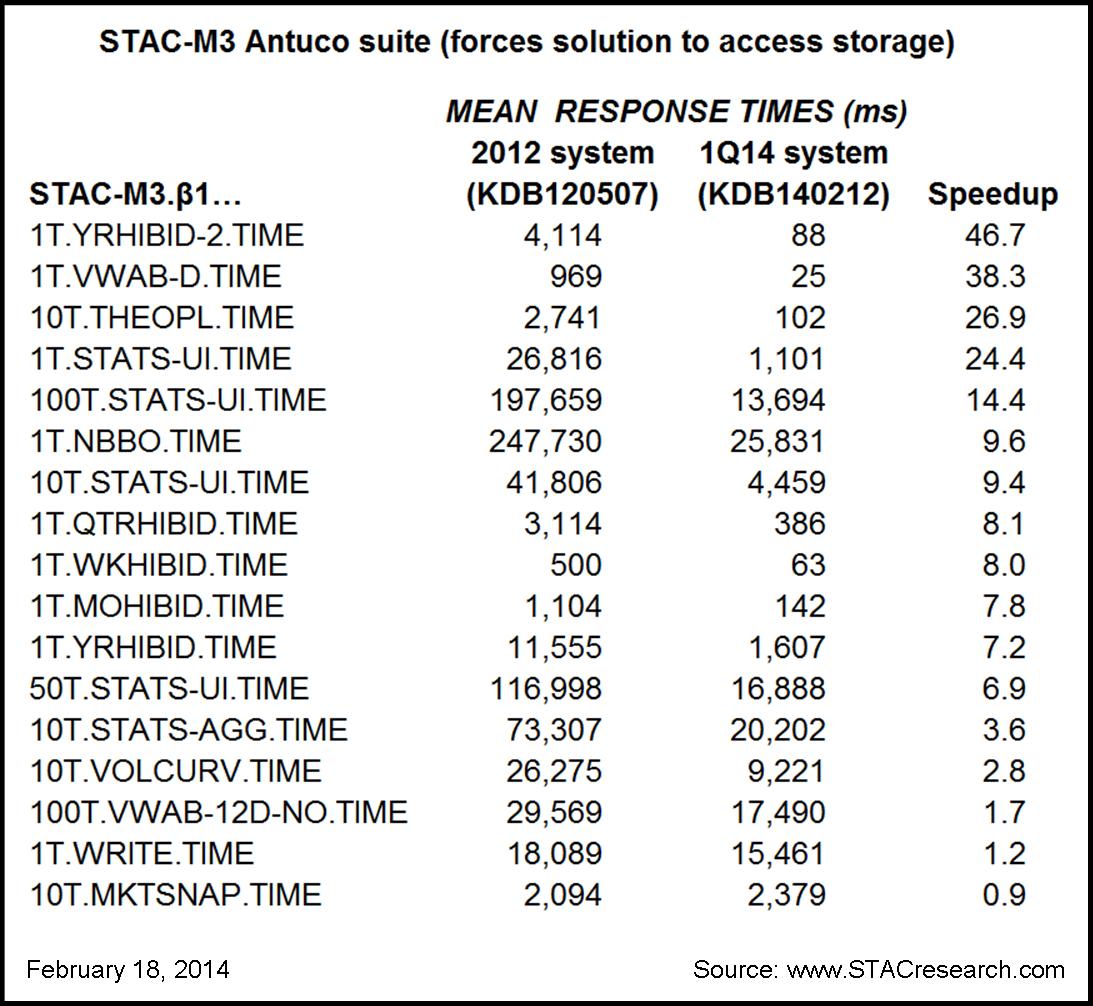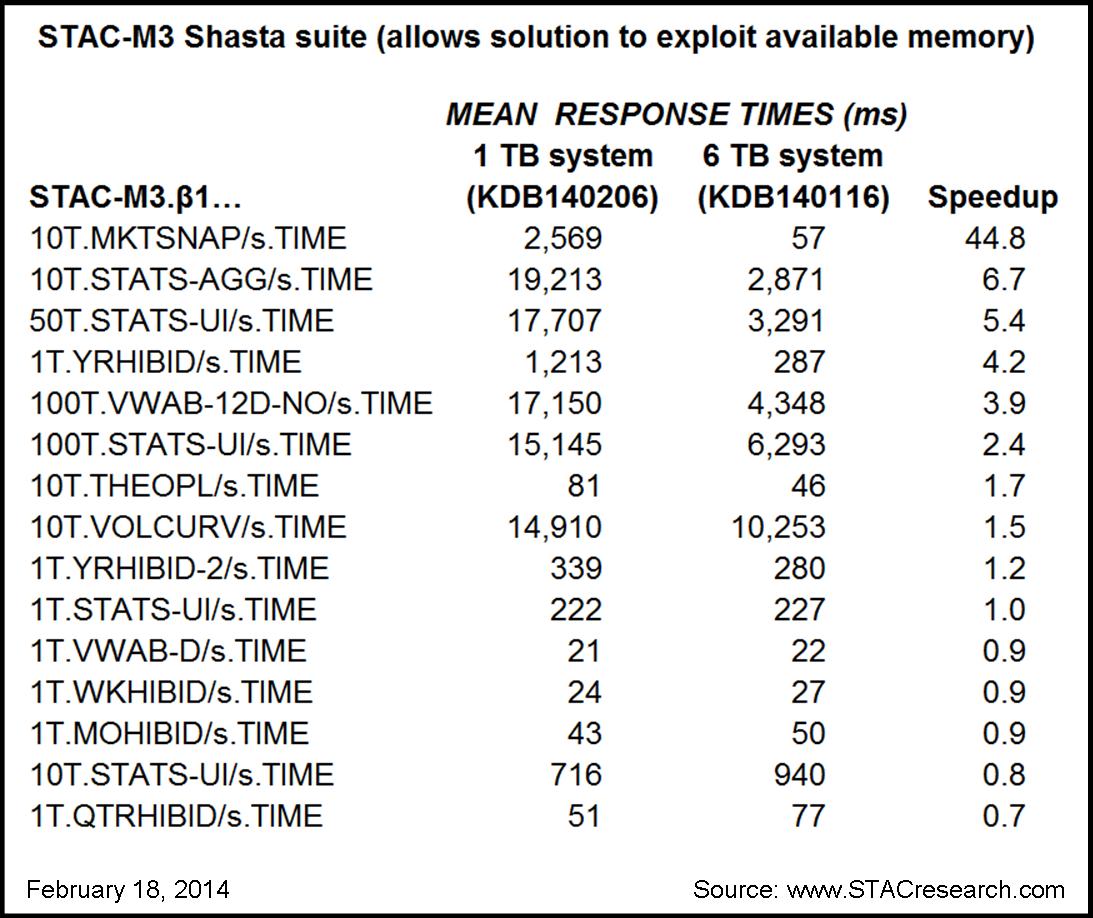STAC Reports: Intel Ivy Bridge-EX with STAC-M3 and kdb+
New systems show generational improvement and the benefit of Big Memory
Intel and IBM recently commissioned audited STAC-M3 Benchmarks of three systems containing the new Intel Xeon E7-4890 v2 ("Ivy Bridge-EX") processors and Intel SSD DC S3700 solid-state drives, running the kdb+ database from Kx Systems:
- A solution using the just-released IBM System x3850 X6 server and 1TB of DRAM (SUT ID KDB140212)
- An Intel white box server with 6TB of DRAM (SUT ID KDB140116)
- The same Intel white box with 1TB of DRAM (SUT ID KDB140206)
They wish to draw attention to two comparisons using these results.
1. Generational improvement. Compare the solution using the IBM System x3850 X6, which we tested first quarter of 2014 to a solution using the IBM System x3850 X5 (SUT ID KDB120507), tested second quarter of 2012. There are several differences between these solution configurations. Among these, the modern system has a more advanced compute architecture (Ivy Bridge-EX vs Westmere-EX), uses a later version of database software that exploits recent Intel instructions such as AVX (kdb+ 3.1 vs kdb+ 2.8), and uses more advanced SSDs (8 x Intel SSD DC S3700 vs 24 x Intel SSD 320).
These systems were tested against the "Antuco" suite of STAC-M3, which forces the database to access the storage system and prevents it from utilizing system memory to cache or pre-load data.
The table below shows substantial performance gains between these two generations of solutions.

2. "Big memory" impact. Compare the performance of the Intel white box using 6TB of DRAM to the same system using just 1TB of DRAM.
Unlike the tests above, these configurations were tested against the "Shasta" suite of STAC-M3, which allows the database to make full use of available memory, such as caching and pre-loading data.
The table below shows substantial performance gains for the 6TB system in cases where the 1TB system had to resort to the SSDs.

For details on these tests, click on the relevant links above. Each report also has a link to detailed system configuration information, which is available to qualified members of the STAC Benchmark Council. Premium members will find the STAC Configuration Disclosures at the links above. Such members may also request the STAC-M3 Pack for kdb+ 3.1 (the q and k code for this implementation) for use in their own labs.
For more information on STAC-M3, see the STAC-M3 main page.
About STAC News
Read the latest about research, events, and other important news from STAC.
